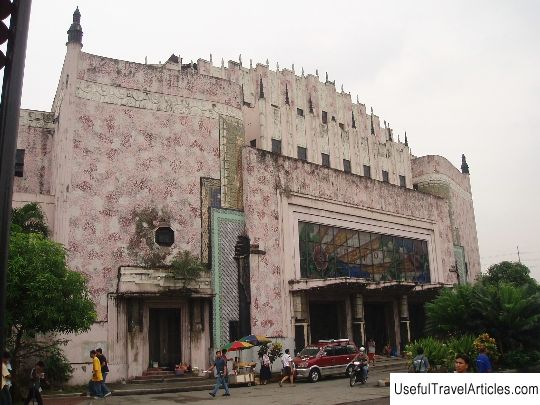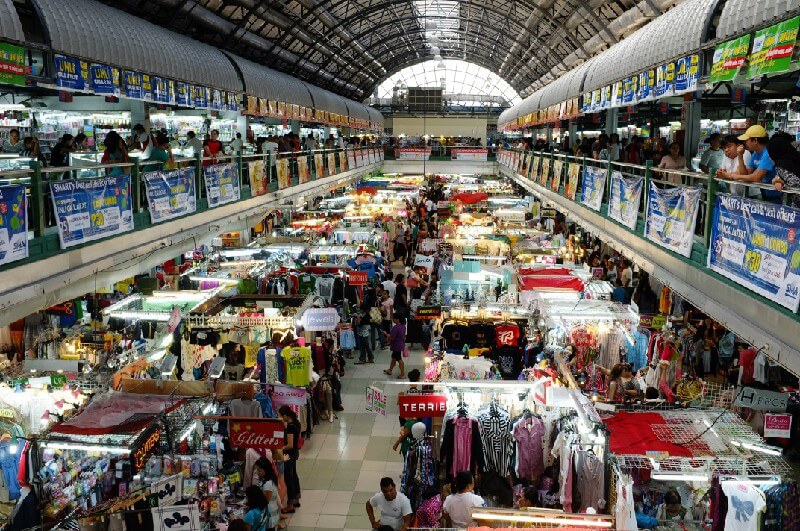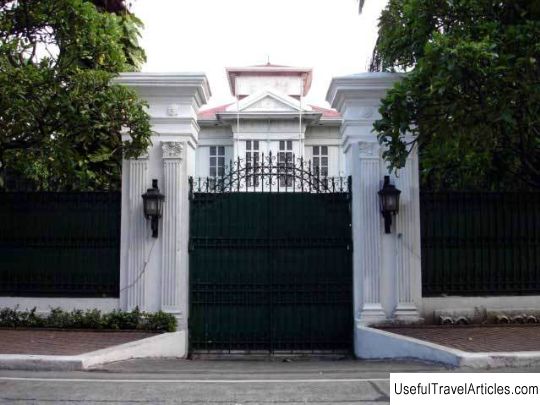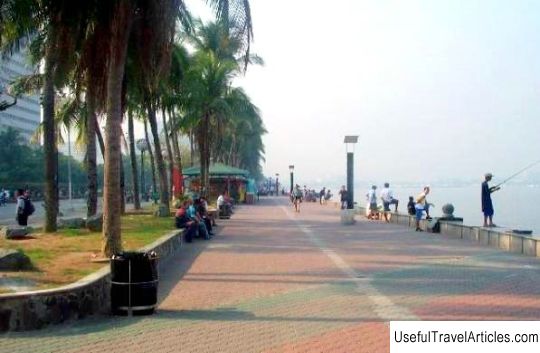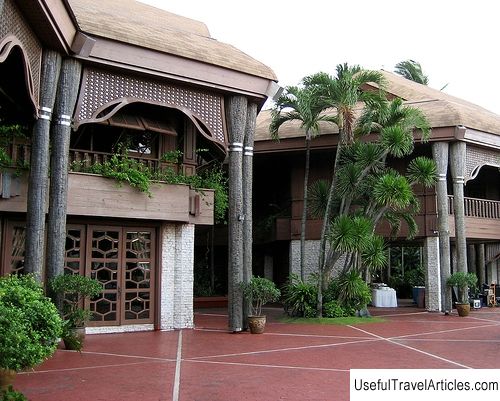The Cultural Center of the Philippines description and photos - Philippines: Manila
Rating: 7,8/10 (1526 votes) 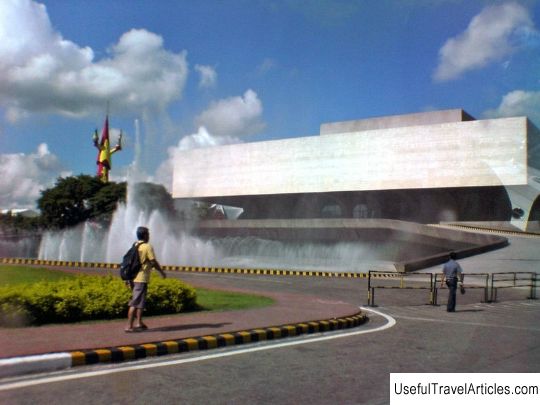
The Cultural Center of the Philippines description and photos - Philippines: Manila. Detailed information about the attraction. Description, photographs and a map showing the nearest significant objects. The title in English is The Cultural Center of the Philippines. Photo and descriptionThe Cultural Center of the Philippines is located in one of the districts of Manila, Pasay City, which is part of the Manila metropolitan area. The center was opened in 1969 at the initiative of President Ferdinand Marcos to promote and preserve the art and culture of the Filipino people, it was conceived as a kind of cultural Mecca of Asia. Since the opening of the Center, troupes of the Bolshoi and Kirov Theaters of Russia, the Royal Danish Theater, as well as groups from America, France, Germany and various cities of the Philippines have performed on the stage of the Center. Each event held within the walls of the Center is fully consistent with its motto - "Faith, Beauty and Kindness". Today, the Cultural Center demonstrates the achievements of Filipino art, inspires the creation of works of art based on traditional motives, and also helps to make art accessible to all segments of the population. An important role in the Center's activities is played by the creation and support of regional cultural centers. Its staff conducts seminars, master classes, exhibitions, symposia and other educational events. The main building of the Center, built on the shores of the Manila Bay, also known as "Tangalang Pambansa", was designed by the country's leading architect Leandro Locsin. It houses 4 theater stages, a museum with ethnographic collections and interchangeable exhibits on Filipino art, exhibition galleries, and a library for the arts and culture of the Philippines. In 2005, the building was renovated in anticipation of the 112th General Assembly of the Inter-Parliamentary Union held in Manila. The facade of the building was cleaned out and the marble decorations were replaced with Italian white limestone. The main fountain and artificial lake in front of the building were also renovated, air conditioning and new carpeting were installed. The garden of 88 hectares surrounding the Center has been substantially renewed. The Center's Main Theater is named after the singer Nicanor Abelardo, who gave new life to the Kundiman genre - traditional Filipino love songs. The theater has a capacity of 1823 people. Inside there is a copper sculptural composition "Seven Arts" by Vicente Manansala. On this stage, ballets and operas are staged, symphony orchestras and other musical groups perform. The Maly Theater is named after Aurelio Tolentino, a Filipino playwright of the early 20th century. On the stage of this theater with a capacity of 421 people, drama performances are staged, chamber music is played, films are shown, etc. Theater-studio "Huseng Batyut" bears the name of the writer Jose Corazon de Jesus, who created many poems, poems and lyrics. This theater consists of two levels: the upper is a gallery, and the lower is a studio with a transformable stage. Finally, the Francisco Balthazar Folklore Theater is dedicated to one of the greatest poets of the Philippines. On this stage, made in the form of an amphitheater, concerts of popular music are held. Various religious leaders often give lectures here. In addition to the theater stages, the building of the Cultural Center houses a number of exhibition grounds. In the Main Gallery, named after the great Filipino artist Juan Luna, large-scale events are held - its area is about 440 sq.m. In contrast, the Small Gallery, named after the painter Fernando Amorsolo, hosts small exhibitions and installations. Works by local artists are on display in the cozy gallery of Guillermo Tolentino. In the coming years, large-scale work will be carried out on the territory of the Cultural Center of the Philippines to expand its territory and functions. It is planned to divide the current territory into 5 clusters. The first cluster will concentrate souvenir shops, cafes and restaurants, a visit center and a ferry pier for guests arriving by boats and yachts will be built. It will also house the Museum of Contemporary Art. The second cluster, the "Art Reserve", will be entirely dedicated to art, its "heart" will be the current Main Building of the Center. The third cluster will connect the second with other sites. Its territory will house a hall with a capacity of up to 8 thousand people, which can be used for various purposes, the Asian Music Gallery, the Museum of National Artists and two small art centers. In the fourth cluster, living quarters for visiting artists will be built, as well as a transport interchange. There will also be a Design Museum, a Dancing Fountain and sculptural compositions. Finally, the fifth cluster will house residential premises and retail space. All of these innovations are planned to be completed by 2014.       We also recommend reading Monument of Eternal Glory description and photo - Ukraine: Zhytomyr Topic: The Cultural Center of the Philippines description and photos - Philippines: Manila. |
